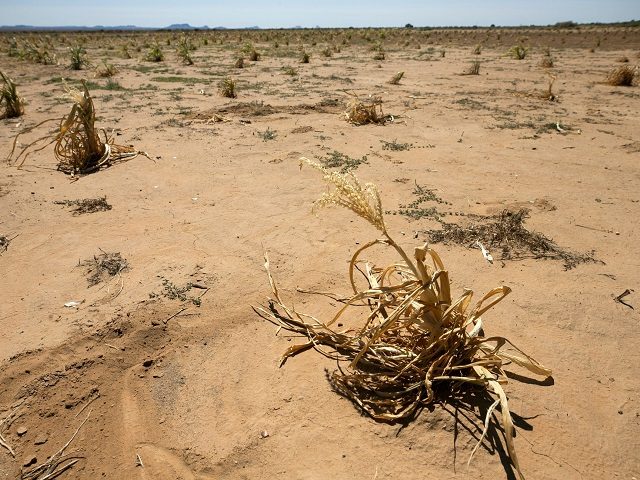As much of the American West faces widespread droughts, farmers and ranchers in central Arizona bear the brunt. They face crop losses and thinner cows as irrigation canals dry.
“In Arizona, 99% of the land is undergoing years-long drought that has accelerated,” the Los Angeles Times reported. “Large swaths of the region are now in extreme distress and the picture may well get worse, with less reliable mountain snowfall to feed streams and a morphing monsoon season that has only proved a temporary reprieve and even led to flooding.”
The article by Carolyn Cole explains the long history of irrigation in Arizona and the impact the drought conditions upstream are having on farmers and ranchers in the state.
Cole writes:
“Can you even call this a farm?” asked Nancy Caywood, standing on a rural stretch of land her Texas grandfather settled nearly a century ago, drawn by cheap prices and feats of engineering that brought water from afar to irrigate central Arizona’s arid soil.
On the family’s 247 acres an hour south of Phoenix, Caywood grew up tending to cotton and alfalfa, two water-intensive crops that fed off melted mountain snows flowing from a reservoir 120 miles away. She grew up understanding the rhythms of the desert and how fields can blossom despite a rugged, sand-swept terrain where sunlight is a given but water is precious.
The article reports that reservoirs which provide water to the central portion of the state are drying up, leaving empty canals and irrigation ditches. Despite recent rains during the monsoon season, the heavier-than-normal rains did not replenish the irrigation system.
Nearly one-third of the state’s water supply comes from the Colorado River and Lake Mead. With the lake’s dwindling water level, Arizona faces dire conditions for the foreseeable future.
“Arizona is pretty much an irrigated state and we’ve managed our water resources generally well,” Stephanie Smallhouse, a fifth-generation cattle rancher on the far outskirts of Tucson who is the president of the Arizona Farm Bureau told the Times. “But it’s near impossible to manage yourself out of a drought.”
Up to 98 percent of the western U.S. is facing some level of drought conditions, Breitbart Texas reported last month.
As of June 16, more than 26 percent of the West is experiencing exceptional drought — the most intense measure, according to a report from U.S. Drought Monitor published by AGWeb.com. Nearly 96 percent of the West is reporting some level of drought. The previous high for this type of dryness during the past 20 years hit only 12 percent.
Ranchers in Pinal County are also feeling the effects, Cole’s report continues. Ranchers are being forced to sell off large percentages of their herds to deal with the shortage of grazing grass.
“If you can’t grow grass, you buy it. But the hay is too expensive because there’s less water to grow it and less water expected down the line,” rancher Clay Buck Parsons told the Times reporter. “So the ranchers are cutting down on their herd to maintain smaller numbers where they can still make a profit.” Parsons is a third-generation rancher and auctioneer. “We’ve sold 12,000 more head this year already than last year,” he explained.
Further south, ranchers in northern Mexico are also being forced to sell off herds to avoid the starvation of cattle, Breitbart Texas reported. The conditions could force ranchers to turn to the Sinaloa Cartel to augment their financial situation.
The article states:
Local scientists predict that in the coming years, the drought in Sonora will worsen, placing the cattle industry at particular risk, the report claimed. Sonora, just south of Arizona, is one of the main drug trafficking areas used by the Sinaloa Cartel. Some of the ranches mentioned in the report are near the city of Cajeme, an area that has seen a spike in cartel violence in recent months.
The drought struggles among ranchers can push more individuals to the Sinaloa Cartel as an economic alternative. In recent years, rival criminal organizations waged fierce turf wars in the region for routes into Arizona.
The Los Angeles Times article provides an expansive history of how the irrigation system of Arizona works and favors longer-established users of the system. Read more here.
Bob Price serves as associate editor and senior news contributor for the Breitbart Texas-Border team. He is an original member of the Breitbart Texas team. Price is a regular panelist on Fox 26 Houston’s What’s Your Point? Sunday-morning talk show. Follow him on Twitter @BobPriceBBTX and Facebook.

COMMENTS
Please let us know if you're having issues with commenting.